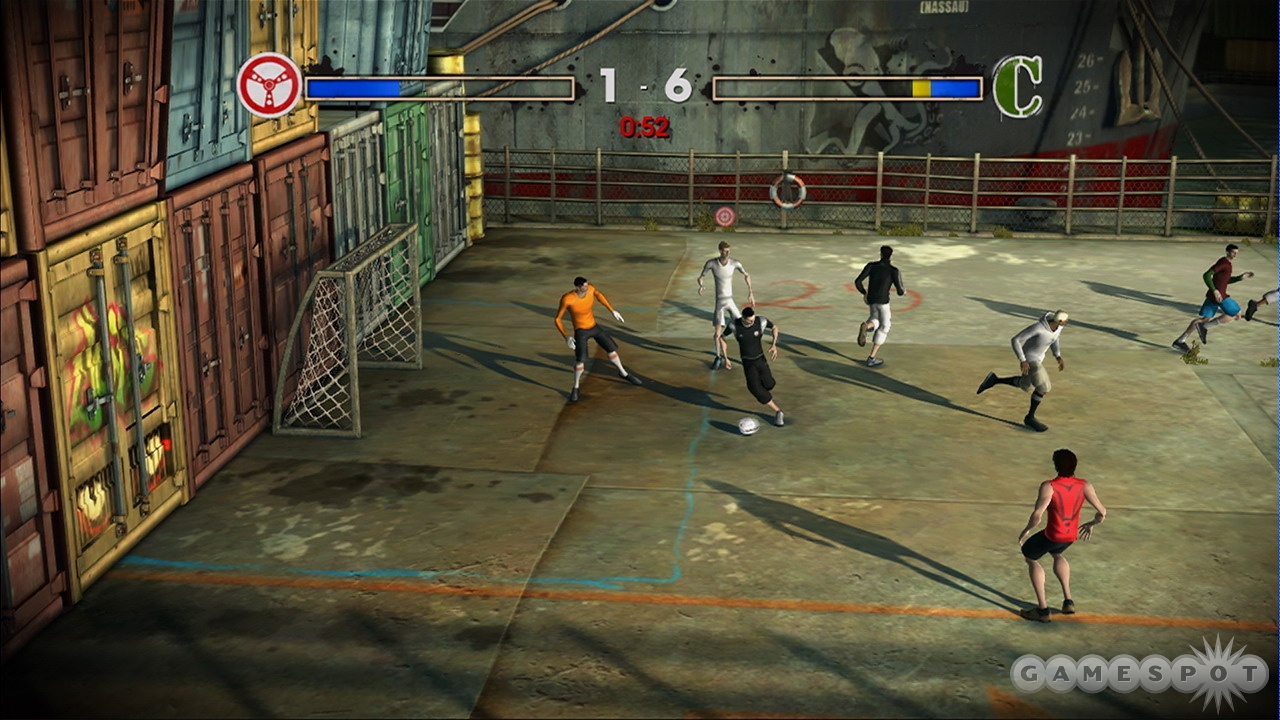
Once full, this bar unlocked a nigh-unstoppable trick shot that, judiciously used, could sway the momentum of a game. The original FIFA Street, from way back in 2005, featured a sort of trick meter that filled up every time you humiliated some poor shmuck.



It’s a shame, then, that these dribbling mechanics, problematic as they are, never feed back into the match at all. Nevertheless, there’s a certain rhythm that guides each match and, when things are going well, the game can be pretty fun in the same way that, say, Asura’s Wrath may have been considered fun: audacious, maximalist, ostentatious. This gives Street the impression of being even flatter and more repetitive than most sports games. With its loose, unresponsive controls, Street denies players the opportunity to exert their will, and learning and massaging the engine’s quirks and pratfalls is often the most fruitful course of action. Sports games depend on player skill and decision-making having a tangible impact on each game - it’s what differentiates your first FIFA match from your hundredth. When collisions do occur, Street’s distorted physics take over, sending players flying, landing in crumpled heaps. Players veer away from loose balls or inexplicably fall to the ground, apparently registering collisions that never happened. On both defense and offense, players get locked into elaborate animations, which lengthens input lag considerably. It is, for example, impossible to make a player turn around and face his own goal if he has the ball. Street employs the same player impact engine used to great effect in FIFA 12, but in a mutated, shambolic form.ĭespite the ease with which players can make something cool happen on screen, Street is surprisingly hard to control for a game predicated on sophisticated dribbling, thanks to a mix of funky collision detection and overlong animations. While there’s a certain joy in being able to (relatively easily, compared to the core FIFA series) pirouette around opponents, this joy is tempered by the concessions required to make it possible. Another discrete system for dribbling while standing still ostensibly attaches your avatar’s foot to the ball with an invisible string, but there seems to be no overlap between the two. The right analog stick governs a large number of pre-animated flicks, step-overs, roulettes, and turns designed to be performed within the run of play. There are two different dribbling systems, but they never seem to interact. Leo Messi’s presence imparts a certain malaise, and it’s not long before you start to wonder if the same marketing dudes who designed the cover also called for FIFA Street’s vapid RPG elements and stunted social networking features.įIFA Street (Xbox 360, PlayStation 3)Įverything in FIFA Street - from the granular acts of dribbling and juggling past opponents to the overarching systems that govern in-game tournaments and team-building - feels loose and disconnected. For a cover athlete with the sheer audacity to pull off the stunts Street allows - but without the marketing chops - look no further than Mario Balotelli. If EA Canada wanted someone to fit into Street’s dubsteppy chav aesthetic, Wayne Rooney would have been ideal. There’s no room for cocky individualism in the Nou Camp. His natural talent was nurtured by, and continues to flourish at, FC Barcelona, which is one of the most group-oriented teams in the world.

Messi is efficient and graceful Street is abrasive and flamboyant. It’s puzzling, then, that EA Sports decided to use Lionel Messi for the game’s cover art. The somewhat mythologized sub-genre called street soccer - as presented by FIFA Street - is hedonistic and excessive, with a strong tilt toward showboating and theatrics.


 0 kommentar(er)
0 kommentar(er)
